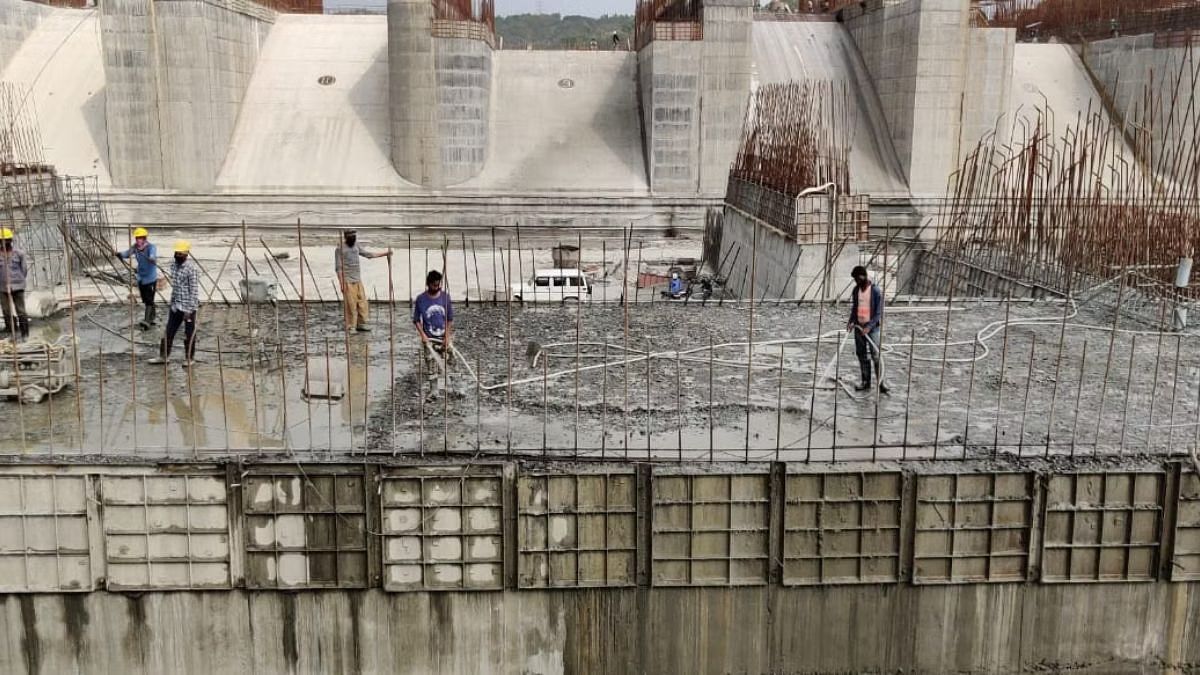After a long, long wait, the Shahpurkandi dam on river Ravi in Punjab, bordering Jammu and Kashmir, has finally been completed. And with this, New Delhi has reportedly stopped the flow of water from the Ravi river into Pakistan.
Media reports have stated that India’s strategic move in water management will help New Delhi retain as many as 1,150 cusecs of water, which was previously directed to Pakistan. Furthermore, this water would now be utilised in Jammu and Kashmir for agricultural purposes.
We take a closer look at what exactly is the significance of the Shahpurkandi dam, and how it is related to the Indus Waters Treaty between India and Pakistan.
All about the Shahpurkandi dam
The Shahpurkandi dam has long been held up. The idea to build this dam can date back to a 1979 agreement between Chief Ministers Parkash Singh Badal and Sheikh Abdullah of Punjab and J&K respectively. According to an Indian Express report, the idea was to build the Ranjit Sagar (Thein) Dam on the Ravi on the border of the two states. And to optimise the utilisation of the water, a second dam was to come up at some distance downstream, at Shahpur Kandi in Punjab’s Gurdaspur district.
Former Prime Minister PV Narasimha Rao then laid the foundation stone for this project back in 1995. However, due to disputes between Jammu and Kashmir and Punjab, the project was suspended and put on the backburner.
Impact Shorts
More ShortsIn 2018, the Centre intervened, called it a national project and the governments of Punjab and Jammu and Kashmir signed an agreement under which the Shahpurkandi dam would be completed in three years.
And work progressed at a snail’s pace, finally being completed now, with officials from the Jal Shakti Ministry telling The Print that the work was finally completed.
Today, the dam stands tall at 5.5 metres and as per an NDTV report is part of a multi-purpose river valley project that includes two hydel power projects with a total installed capacity of 206 MW. In fact, the two hydropower plants are expected to be completed by 2025.
Speaking on the dam, Union minister Jitendra Singh said that PM Modi had accorded the highest priority to the Shahpurkandi dam project as it has the potential to irrigate thousands of acres of agricultural land in Jammu and Kashmir.
“Had Narendra Modi not become the prime minister in 2014, the Shahpurkandi dam project — that was stalled for 70 years — would not have resumed,” Singh, the Union minister of state in the Prime Minister’s Office said on Sunday at a public meeting at Basohli in Kathua district, which is part of his Udhampur parliamentary constituency.
Importance of the dam
The dam is beneficial to the people of Jammu and Kashmir, as well as Punjab. As per a spokesperson of the project, it will irrigate 32,000 hectares of agricultural land in the Kandi areas, along the Jammu-Pathankot national highway in Samba and Kathua districts.
As one official told The Print, “With Shahpur Kandi dam becoming operational, we will be able to operate Ranjit Sagar dam to its full capacity, without spilling water to Pakistan. There will be controlled release of water downstream of Shahpurkandi, which will allow better utilisation of water at Madhopur barrage.”
Now, J-K will receive at least 1,150 cusecs of water that was previously allocated to Pakistan, under the Indus Waters Treaty of 1960. Jammu and Kashmir will also get 20 per cent of the hydel power generated from dam.
Indus Waters Treaty, explained
As per the Indus Waters Treaty , New Delhi has exclusive rights over the waters of the rivers — Sutlej, Beas, and Ravi — which amount to 33 million acre-feet (MAF) annually. While Islamabad has control over the waters of the western rivers — Indus, Jhelum, Chenab — amounting to 135 MAF.
The treaty was signed in 1960 by former Prime Minister Jawaharlal Nehru and then Pakistan president Ayub Khan, with the World Bank being a signatory. As per the treaty, India can use the water from the rivers but there are restrictions on building storage systems on the western rivers. However, it gives India the right to generate hydroelectricity with the use of the western rivers with specifications for design and operation in place. Furthermore, Pakistan also has the right to object to the design of the Indian projects.
However, since signing the treaty, one of India’s biggest grievances has been that does not allow it to build storage systems on Sutlej, Beas, and Ravi, the western rivers. According to the treaty, such systems can be built under exceptional circumstances but India complains that any such attempts are blocked by Pakistan. It does not help that these rivers lie in Jammu and Kashmir, which remains an unresolved issue between India and Pakistan.
Interestingly, in January last year, India had issued a notice to Pakistan for the modification of the Indus Waters Treaty (IWT). The notice was sent through respective commissioners for Indus waters because Islamabad refused to discuss and resolve the issue of India’s Kishenganga and Ratle Hydro Electric Projects for the last five years, despite New Delhi’s efforts, said sources to NDTV.
With inputs from agencies


)

)
)
)
)
)
)
)
)



